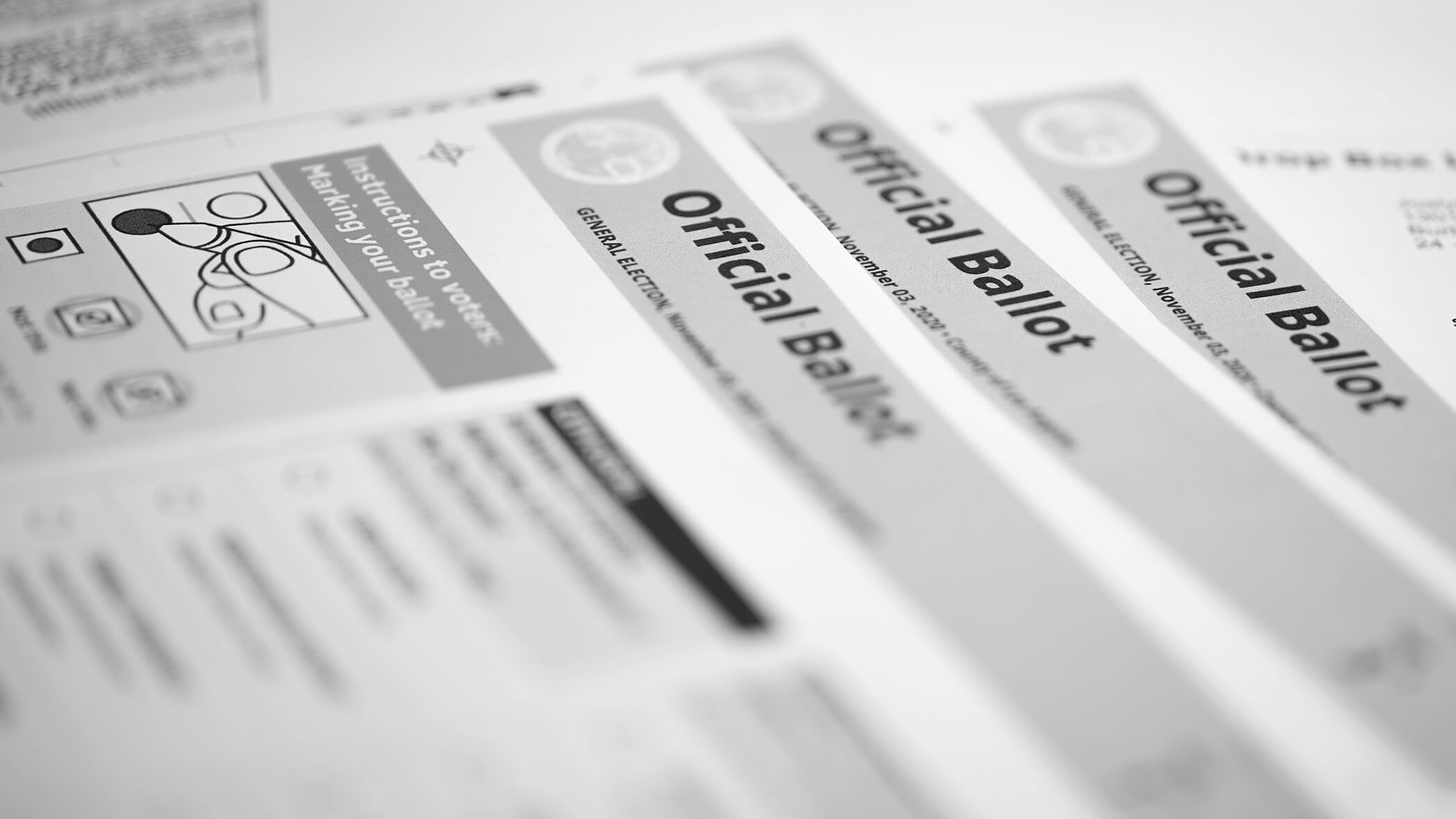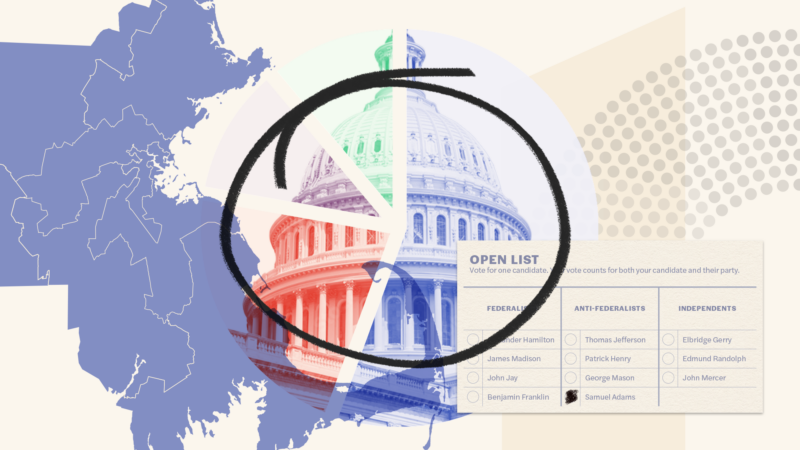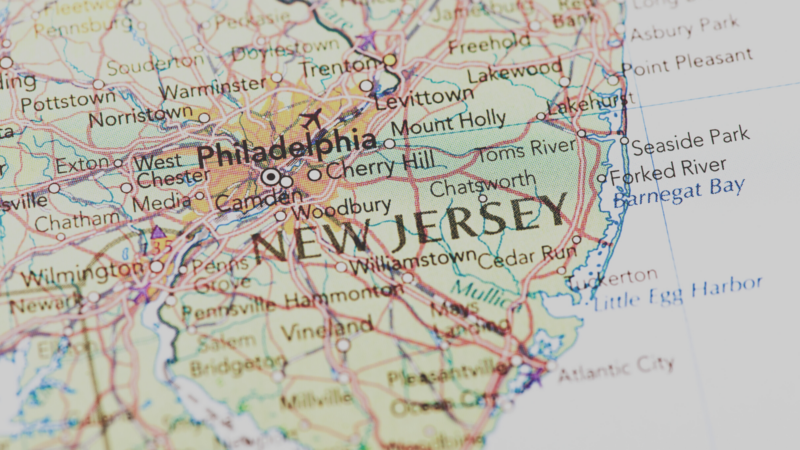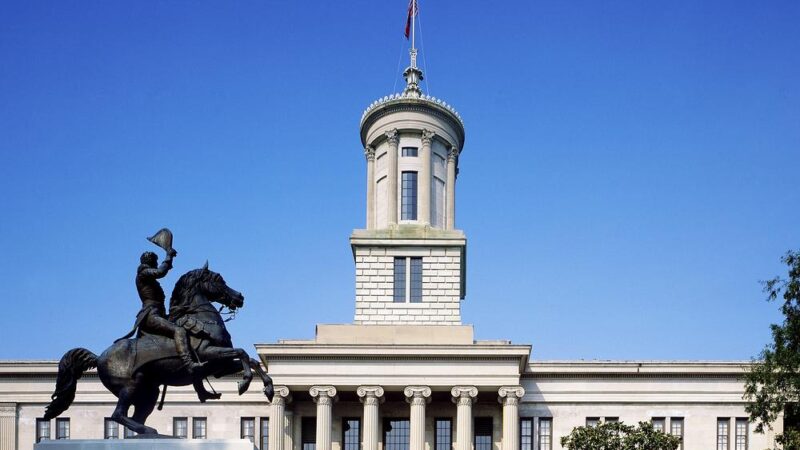Sources of Change: Prioritizing Parties
- October 17, 2023
From More than Red and Blue: Political Parties and American Democracy

Abstract
We outline two seemingly contradictory observations about political parties in the United States: Parties are essential to democracy, but U.S. institutions are often hostile to them. Therefore, we argue that reforms that try to sidestep political parties in elections or that ignore their role in legislating are unlikely to improve democracy. We also suggest more attention be given to the nature of our two-party system. Finally, we argue that institutional reform should be coupled with an effort to cultivate a more healthy understanding of the role of political parties in American political culture.
Talk to political scientists about political parties long enough, and one of them will start quoting E.E. Schattschneider. On the very first page of his celebrated if now a bit dated book Party Government, Schattschneider asserts that “modern democracy is unthinkable save in terms of the parties.”1Schattschneider, E.E. 1942. Party Government. Westport, CT: Greenwood Press.
Devotion to Schattschneider’s claim is maybe the fastest way to distinguish most political scientists from most other observers of American politics. While political scientists may be critical of American parties, they rarely try to imagine a political system without parties at all. Reformers, journalists, and ordinary citizens, on the other hand, see gridlock, polarization and partisan hostility and conclude that parties themselves are the problem.
While we agree with Schattschneider that parties are an indispensable part of a functioning democracy, it is also true that our political parties are experiencing a great deal of dysfunction. But we do not think those flaws can be corrected by undermining political parties. Indeed, we think we have more than two centuries of evidence of American institutions designed to thwart political parties, with no real success.
Rather, we think the problem is precisely with those constraints on political parties. If Schattschneider is right that parties are necessary for democracy, and, if many U.S. institutions are indifferent or even hostile to political parties, then we need to confront the possibility that those institutions are themselves undermining democracy.
If our institutions are holding back American democracy, the next step is not obvious. The U.S. Constitution is famously hard to change, and many Americans would resist changes to make parties more powerful. But acknowledging this tension is a critical step in improving democracy in the United States.
Unthinkable Save in Terms of PartiesUnthinkable Save in Terms of Parties
What does it mean to say that partyless democracy is “unthinkable”?
Obviously, we can have democratic elections without parties. Many elections for city councils, school boards, county commissioners, and other offices are explicitly non-partisan, but we would not label them undemocratic. Rather, the lack of political parties limits and distorts the ability of the mass public to play their role in a democracy.
Organization and cooperation underpin every stage of democratic government — from the selection of candidates for office, to their election, to the shaping and adoption of a legislative agenda, to the implementation of that legislation, all the way around to the next election, where voters hold those in office accountable for what they’ve done since the last election. When John Aldrich systematically explored “why parties” emerge, he showed that in the legislature, in the electorate, and as candidates, ambitious politicians needed institutions to help them do their job.2Aldrich, John. 1995. Why Parties? The Origin and Transformation of Political Parties in America. University of Chicago Press. They created parties to do that. Many actors could provide that organization and facilitate that cooperation, but political parties are present throughout the process. It is political parties that organize Congress and foster coordination between the legislative and executive branches. It is parties that nominate candidates and mobilize campaigns to elect them. Voters, therefore, ought to be thinking about parties first when they vote.
To see what we mean, consider two tempting alternatives, both of which are common journalistic frameworks for discussing elections. First, one might vote “for the person, not the party.” Or second, one might vote for the candidate who is ideologically most preferable, or whose policy preferences are closest to them. Both of these non-party approaches to vote choice create problems when we consider their likely implications for actual governance.
In the first case, focusing on the person ignores the team they will work with once they get to office. It is not enough to send a group of level-headed, knowledgeable citizens with good values to the legislature. You need to know who they will work with and who will advise them once they get there. The same applies in the second case, where an ideologically ideal candidate may not be able to actually implement their policy preferences. They will need to work with others in the legislature — meaning in their party — to advance their goals. A moderate candidate might support either party’s leadership, but their first and most important vote is the one where they decide which party’s leaders should control Congress.
Political theorist Robert Goodin plays out this thought experiment in greater depth in his essay on “no-party democracy.”3Goodin, Robert E. 2008. The Place of Parties. In Innovating Democracy: Democratic Theory and Practice After the Deliberative Turn. Oxford University Press. Goodin argues that alternative criteria for selecting a candidate would no doubt emerge if parties were not available. Voters might elect someone on the basis of ethnic kinship or their personal charisma. None would be superior to a party, he concludes, because a party provides a tie between the citizenry and the reasons by which politicians make their decisions.
Perhaps fortunately, most voters do, in fact, rely on political parties as their first heuristic in voting. Partisan attachment is overwhelmingly the strongest predictor of vote choice.4Campbell, Angus, Philip E. Converse, Warren E. Miller and Donald E. Stokes. 1960. The American Voter. New York: Wiley.5Green, Donald, Bradley Palmquist and Eric Schickler. 2002. Partisan Hearts & Minds: Political Parties and the Social Identities of Voters. New Haven: Yale University Press.6Lewis-Beck, Michael S, Helmut Norpoth, William Jacoby and Herbert F Weisberg. 2008. The American Voter Revisited. Ann Arbor: The University of Michigan Press.7Miller, Warren E. and J. Merrill Shanks. 1996. The New American Voter. Cambridge: Harvard University Press. This requires, of course, that the parties offer candidates who will, when elected, follow through on the commitment of their label. That is easiest done by parties that have control over their own nomination process, but it at least requires candidates who embrace the team they have chosen.
Institutions Against PartiesInstitutions Against Parties
If political parties are so central to a well-functioning democracy, they are conspicuously absent from the U.S. Constitution. Indeed, the framers were quite overt in their dislike of parties (or “factions”) as they conceived of them, and they tried to set up their new government accordingly.
James Madison argued that the constitution would guard against “the mischiefs of faction” by making it hard for divergent interests to coordinate or capture control of government.8Madison, James. 1787. “Federalist No. 10.” The Federalist Papers. George Washington warned against the spirit of party that he saw in the machinations of those aligned with the Federalists and the anti-Federalists.9Washington, George. (1796) 2000. “Farewell Address to Congress.” 106th Congress 2ⁿd Session Senate Document No. 106-21, Washington. Thomas Jefferson, protesting the suggestion that he was aligned with the Federalists, wrote to Francis Hopkinson that “If I could not go to heaven but with a party, I would not go there at all.”10Jefferson, Thomas. 1789. “From Thomas Jefferson to Francis Hopkinson, 13 March 1789.” The Founders Online. https://founders.archives.gov/documents/Jefferson/01-14-02-0402.
In many ways, the Founders were successful at limiting parties. So much so that historian Richard Hofstadter described their work as a “constitution against parties.”11Hofstadter, Richard. 1970. The Idea of a Party System. University of California Press. Politicians have since labored to overcome these defects. The Electoral College, which at first selected the top two vote-getters as president and vice president, was reshaped to reflect the partisan conflict between two rival tickets.
And not all the constraints on parties are due to constitutional design. As Seth Masket has shown in No Middle Ground and The Inevitable Party, progressive era reformers often sought to limit the power of what they saw (often rightly) as corrupt political parties by limiting parties in general.12Masket, Seth. 2009. No Middle Ground: How Informal Party Organizations Control Nominations and Polarize Legislatures. Ann Arbor: The University of Michigan Press.13Masket, Seth. 2016. The Inevitable Party: Why Attempts to Kill the Party System Fail and How They Weaken Democracy. Oxford University Press. The results, however, often empowered wealthy interests, undermined efforts to convey the full benefits of citizenship to new immigrants, made politics more confusing to average voters, and reduced the accountability of elected officials.
If we think that the election of Donald Trump represents the kind of development that undermines democracy, it’s important to acknowledge that his election is a direct consequence of institutional changes that weakened American parties. In 1968, after the Democratic Party nominated Hubert Humphrey against the will of a significant group of party activists, the party moved to reform its nomination process, opening it up to rank-and-file members of the party. The simplest way to implement this was in state-run primaries, which expanded for both Democrats and Republicans in the years that followed.14This process illustrates how unintentionally interdependent the parties’ internal rules are with state laws. The Democrats’ demand for more primaries was met by state legislatures, who provided primaries to all parties. The reforms were not necessarily meant to undermine the party’s control over its own nominee,15Austin Raney argues that reformers expected to create more opportunities for rank-and-file voters to meet and deliberate, such as in the caucuses that a few states still have. but the consequences of those reforms were seen to cut out the role of party leaders in vetting candidates, instead advantaging narrowly factional candidates who had an intense, if minority, following.16Cohen, Marty, David Karol, Hans Noel and John Zaller. 2008. The Party Decides: Presidential Nominations Before and After Reform. University of Chicago Press.17Ranney, Austin. 1975. Curing the Mischiefs of Faction. University of California Press.18Polsby, Nelson. 1983. Consequences of Party Reform. Oxford: Oxford University Press.
In The Party Decides, Cohen et al. argue that the parties, seeing this problem, worked to mitigate it by throwing support behind their preferred candidates in the primary contests themselves.19Cohen, Marty, David Karol, Hans Noel and John Zaller. 2008. The Party Decides: Presidential Nominations Before and After Reform. University of Chicago Press. They could no longer guarantee a win, but they could shape the choices voters faced and even nudge voters toward a party-approved choice. From about 1980 to the present, the parties were largely successful in determining presidential nominees, although with several notable failures. In 2016, Republican Party leaders agreed on little, but most agreed that Donald Trump was too unreliable, too self-interested, and too ignorant of party commitments and the norms of American politics to be their party’s best choice. But the post-reform system that parties were using to sway the nominations required more than just opposing Trump; it required them to choose an alternative. Without that, the choice fell back to the dynamics that Nelson Polsby described, and a narrowly factional candidate won, just as he would have predicted.
As Hans Hassell and others have argued, the parties also shape the outcomes of congressional nominations in a similar way.20Hassell, Hans J. G. 2017. The Party’s Primary: Control of Congressional Nomination. Cambridge University Press. But there, too, their influence is one of many forces. The low-level of information and participation in primaries often makes it harder for the informal methods that parties must use to prevail.
Saving democracy by saving parties?Saving democracy by saving parties?
If democracy requires parties, and our democratic institutions have consistently hindered them, are there ways to reform our institutions to make parties, and democracy, healthier?
Unfortunately, it is clearly not enough just to make parties strong again. For one reason, “strong” is not a simple thing for parties. As Julia Azari noted, the political parties of today are weaker institutionally, but their followers are still quite loyal, a toxic combination she labels “weak parties with strong partisanship.”21Azari, Julia. 2016. “Weak Parties and Strong Partisanship are a Bad Combination.” Vox, November 3. https://www.vox.com/mischiefs-of-faction/2016/11/3/13512362/weak-parties-strong-partisanship-bad-combination. The combination is toxic because, as we noted above, voters who reliably vote for their party’s candidates are expecting those candidates to meet the standards of their party. Weak parties are less able to ensure those candidates do so.
Few political scientists would say that the Republican Party in the United States is a healthy, well-functioning party.22See for instance Julia Azari, 2016, “Why Hasn’t the Republican Party Collapsed?” Politico, August 15; Rachel Blum, 2020, How the Tea Party Captured the GOP: Insurgent Factions in American Politics, University of Chicago Press; Theda Skocpol, 2016, “Republicans Ride the Trump Tiger,” Project Syndicate, May 20; Dan Balz, 2023, “House Republicans’ Dysfunction Points to More Chaos Ahead,” The Washington Post, January 4; Leigh Ann Caldwell and Theodoric Meyer, 2022, “Republicans in Disarray,” The Washington Post, November 16. If a party is supposed to shape an agenda and brand for the voters to choose, then nominating Donald Trump in 2016 was a misstep — one that many Republicans observed at the time.23Burns, Alexander, Maggie Haberman, and Jonathan Martin. 2016. “Inside the Republican Party’s Desperate Mission to Stop Donald Trump.” The New York Times, February 27. https://www.nytimes.com/2016/02/28/us/politics/ donald-trump-republican-party.html. And the anti-democratic impulses that Trump encouraged — questioning the outcome of legitimate elections without evidence — have pulled the party into a dangerous place. Now that these elements have control of the party, they are empowered by the party institutions one might hope would have restrained them a few years earlier. Now anti-democratic forces within the Republican Party can make the decisions about what kind of primaries to hold, who should hold party leadership posts, even the nature of the party’s platform. Institutions that could have helped the party and American democracy in 2016 might just be hurting them today.
There is less consensus on the nature of dysfunction in the Democratic Party,24See Julia Azari, 2021, “A.O.C. and Manchin Are in the Same Party. No Wonder Democrats Are Struggling,” The New York Times, December 30; Julia Azari, 2021, “Are Democrats Dysfunctional or Just Disagreeing?” FiveThirtyEight, October 5; Jonathan Bernstein, 2021, “Democrats Are in Disarray, or Maybe Just Negotiating,” Bloomberg, September 23. but there, too, increasing the power of party leadership could be problematic. We do not believe that the Democratic National Committee conspired to deprive Sen. Bernie Sanders of the presidential nomination in 2016 or 2020, nor do we think they could have. But the perception among many likely Democratic coalition members is that the “elites” have too much power. This led to the compromise in 2018 to strip unpledged delegates (often called “Superdelegates”) of their vote on the first ballot at the national convention.
In other words, while we think the United States needs responsible parties at the center of its democracy, (1) the existing parties do not always act responsibly, and (2) many Americans are wary of their taking up that responsibility.
Some reformers conclude from this that, since our parties have lost some control over their nominations and their agendas, we should stop looking to them to fill that role and should instead develop new institutions that do not need parties. The political science research we have outlined above yields two important cautions: efforts to block parties generally fail to exclude them altogether, and the party-weakened alternatives that emerge are often worse than what existed before.
As alternatives, the research offers a few paths toward better party-based democracy. The 1950 APSA commission’s report issued a series of recommendations, including one that is often overlooked. The commission called for more research on political parties, perhaps an obvious recommendation from a group of academics.25American Political Science Association, Committee On Political Parties. 1950. “Toward a More Responsible Two-Party System.” American Political Science Review 44(3). But we think that everyone interested in improving American democracy ought to be paying more attention to political parties, from academics to reformers, journalists to politicians. This means not just building on the existing academic knowledge presented in this volume, but in the framing of any new information gathering, in these several ways:
First, political parties should be a central consideration of any reform proposal. The question should not be limited to how would this reform change the candidates that run or that win, but rather how would this reform change how political parties fill their roles.
Consider, for instance, reforms that aim to sidestep the role of parties in choosing nominees. There are several, including ranked choice voting in single- member districts, top two or final-five voting, or “blanket primaries.” In all cases, multiple candidates from each party compete together in a round of voting that takes the place of partisan primaries. In some cases, ballot formats address some of the problems of having many choices, such as allowing voters to rank several options. But in all of these models, the formal role that the party plays in selecting the candidates that will run under their banner is circumvented.
Such institutions do not need to undermine parties. Australia uses a system like these, the alternative vote, in which voters rank their choices in a single-member district. But Australia has a robust party system, in part because its other institutions are nurturing to political parties. We need to better appreciate how America’s decentralized, informal parties will react to these reforms. In California’s top-two primary system, for instance, there is evidence that party organizations can act to communicate to voters who is the party- endorsed candidate among the many with the same party label.26Kousser, Thad, Scott Lucas, Seth Masket, and Eric McGhee. 2015. “Kingmakers or Cheerleaders? Party Power and the Causal Effects of Endorsements.” Political Research Quarterly 68 (3):443-456.
But how do parties do that work with ranked-choice ballots? Candidates in ranked-choice elections have an incentive to discourage co-partisans from supporting their same-party rivals while parties want voters to rank all of the candidates of the same party. Candidates have struggled with both of these messages in recent elections with transferable votes.27Blake, Aaron. 2022. “It’s Official: Sarah Palin Cost the GOP a House Seat.” The Washington Post, September 9. https://www.washingtonpost.com/politics/2022/09/09/palin-begich-ranked-choice-voting.28Scribner, Herb. 2022. “Sarah Palin, Nick Begich Trade Jabs in Alaska House Race.” Axios, September 6. https://www.axios.com/2022/09/06/sarah-palin-nick-begich-alaska-house-race. With fierce intraparty conflict on the same ballot as inter-party conflict, the party’s job in communicating to voters is that much harder. Findings like these raise serious questions about whether most forms of ranked-choice ballots would help political parties do their job in the U.S. context, absent other reforms.
Second, as we seek to strengthen American democracy, the role of parties should be central in reporting on and understanding of legislation and policymaking. Compared to a half-century ago, the modern Congress is incredibly partisan. But it is also often seemingly dysfunctional. This dysfunction may come in part from the narrowness of the majorities that each party has been able to assemble.29Lee, Frances E. 2016. Insecure Majorities: Congress and the Perpetual Campaign. University of Chicago Press. Such parties have little incentive to compromise.
Observers sometimes suggest that merely sending more moderates to Congress would make things function more smoothly. But with these narrow majorities, it is often the self-identified moderates who create the most difficulty for party cohesion.30Blake, Aaron. 2022. “Mitt Romney’s Historic Flip on Ketanji Brown Jackson.” The Washington Post, April 5.31Davidson, Lee. 2020. “Mitt Romney Sticks with Republicans, Favors Quick Vote on Supreme Court Nominee.”The Salt Lake Tribune, September 22. https://www.sltrib.com/news/politics/2020/09/22/mitt-romney-sticks-with.32Leonhardt, David. 2022. “The Decisive Vote.” The New York Times, August 11.33Noel, Hans. 2021. “Democrats Complain about Joe Manchin, But They’re Lucky to Have Him.”The Washington Post, June 9.34Widdicombe, Lizzie. 2021. “What Does Kyrsten Sinema Really Want?” The New Yorker, October 20. Such difficulties can also expose the limits of the majority party’s power in shepherding through its agenda.
That is, parties are not just important for elections. They are important for governing. It is common to define political parties primarily in terms of their goal of capturing control of government. But American democracy does not elect a policy dictator. Policymaking continues after the election with coalition formation and management. Parties are at the center of that process. The U.S. political system is famously shot through with veto points. The separation of powers requires coalitions to form across chambers and branches, and at multiple levels of the federal system. Such coalition-formation is deliberately hard. The starting position for that process is the coalitions shaped by the political parties.
Third, we need to more thoughtfully explore the nature of our two-party system. Some observers find unique value in the two party system, but many have lately noted that a robust multiparty system would address some of the concerns raised above.35Rosenbluth, Frances McCall, and Ian Shapiro. 2018. Responsible Parties: Saving Democracy from Itself. Yale University Press.36Drutman, Lee. 2020. Breaking the Two-Party Doom Loop. Oxford University Press. With only two choices, voters have a particularly blunt instrument to express their dissatisfaction with a party that embraces anti-democratic views. Even Republicans who are greatly bothered by anti-democratic candidates within their party still consider those options better than whoever the Democrats are putting up. And under a two-party system, factions with very significant differences must find harmony in one of two enduring coalitions.
The United States offers significant barriers to a multiparty system, in much the same way that it offers barriers to robust parties in the first place. Political scientists have long understood that Duverger’s Law, which ties our first-past-the-post electoral rules to a two-party system, is far from an ironlaw.37Duverger, Maurice. 1951. Political Parties: Their Organizations and Activity in the Modern State. London: Methuen and Co.38Maurice Duverger himself may have over-stated the tendency, but even he acknowledged that it was only a tendency: “The simple-majority single-ballot system favors the two-party system.” And only the United States has quite so firmly established two parties. But only the United States combines plurality rule single-member districts with presidentialism based on an Electoral College and primary elections that allow factions to express their independence within established parties.
Given this context, a change from our two-party system would likely take more than one or two minor reforms. Ranked-choice voting is unlikely to encourage multipartyism without multi-member districts. The most common challenges to the two-party “duopoly” are from independent candidates or from broad anti-party movements such as No Labels or Andrew Yang’s Forward Party. There are more fundamental questions calling us to collectively imagine what American institutions would let vibrant, programmatic parties thrive, perhaps many of them.
Finally, however, institutions alone probably will not save us. America’s political culture remains suspicious of political parties. Any reforms to empower parties, if implemented in a democratic way, would run afoul of that suspicion.
That need not be an insurmountable obstacle. Political leaders can and have led citizens to a richer understanding of the needs of democracy. Just as we want to shore up America’s commitment to inclusive, multiethnic democracy, we should shore up America’s respect for the role of groups of citizens, organized together to advance political goals through the electoral system. Those groups will organize — as political parties — regardless of what institutions we throw at them. Better to encourage them to act responsibly than to fight them.
A better understanding of political parties in all of these aspects of our politics would, we think, help empower American democracy at its current critical moment.
The analysis, views, and conclusions contained herein reflect those of the author(s) and do not reflect the views of the American Political Science Association or Protect Democracy.
Related Content
Join Us.
Building a stronger, more resilient democracy is possible, but we can’t do it alone. Become part of the fight today.
Donate
Sign Up for Updates Sign Up for Updates
Explore Careers Explore Careers
How to Protect Democracy How to Protect Democracy



